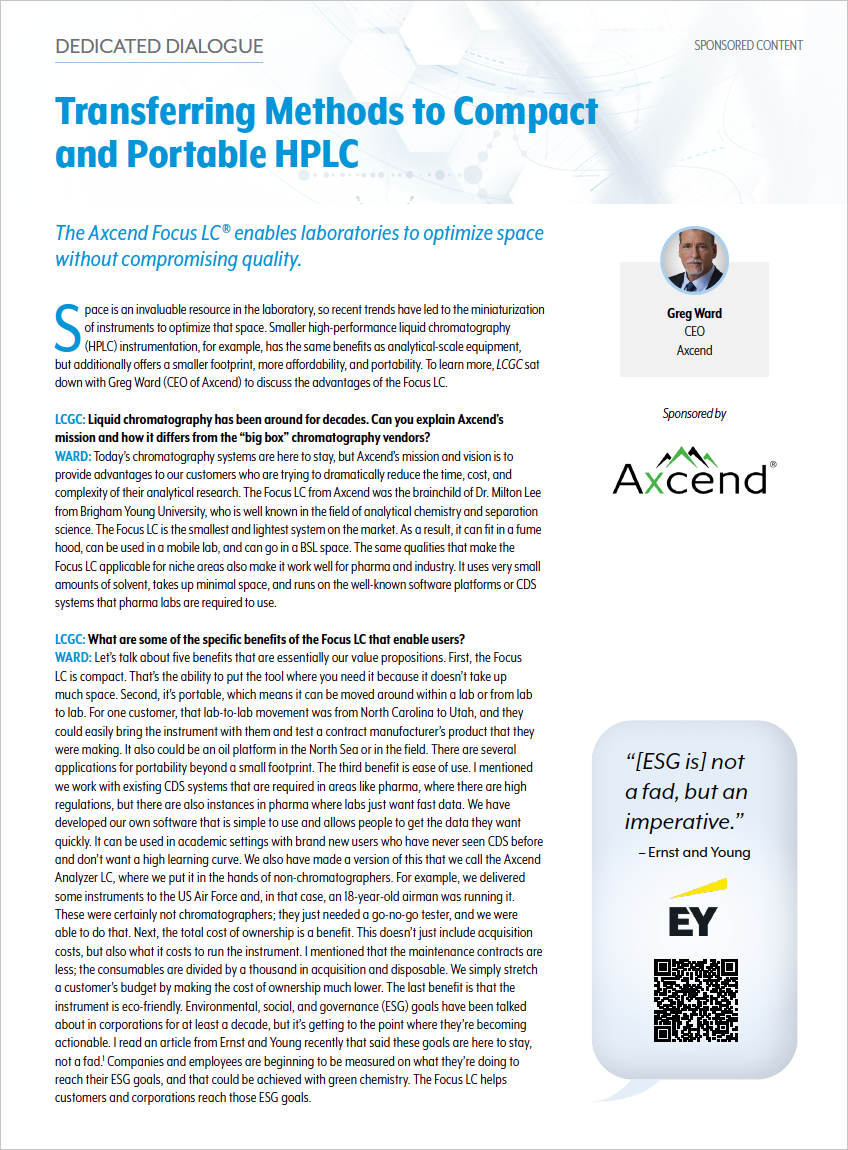Transferring Methods to Compact and Portable HPLC
The current trend in laboratory equipment design is the miniaturization of laboratory instruments. Smaller-scale HPLC instruments offer benefits that cannot be matched by analytical-scale equipment, especially in the areas of portability, reduced fluid volumes, and reduced operating costs. Yet, the miniaturization of laboratory equipment has brought with it a unique set of challenges, including transferring methods to compact LC. Capillary LC expands the use of LC to applications not currently done using conventional LC in a wide array of application areas, including pharmaceutical, food and beverage, petrochemical, environmental, and oil and gas. Greg Ward, Axcend’s CEO wrote, “Customers want an HPLC system with a small footprint, low flow rates and green chemistry.” Join his podcast where he shares method transfer in these application areas.
Determining the Effectiveness and Safety of Cinnamon Derivatives for Diabetes Treatment with HPLC
March 27th 2025Cinnamon and its byproducts have been used for many years because of their antidiabetic effect. In a joint study conducted by Gazi University (Ankara, Turkey) and Düzce University (Düzce, Turkey), high performance liquid chromatographic (HPLC) and thin-layer chromatography (TLC) analyses, macroscopic analyses, and enzyme inhibition assays on diabetes-related enzymes were performed on cinnamon samples to determine whether they are safe to use for health purposes.






